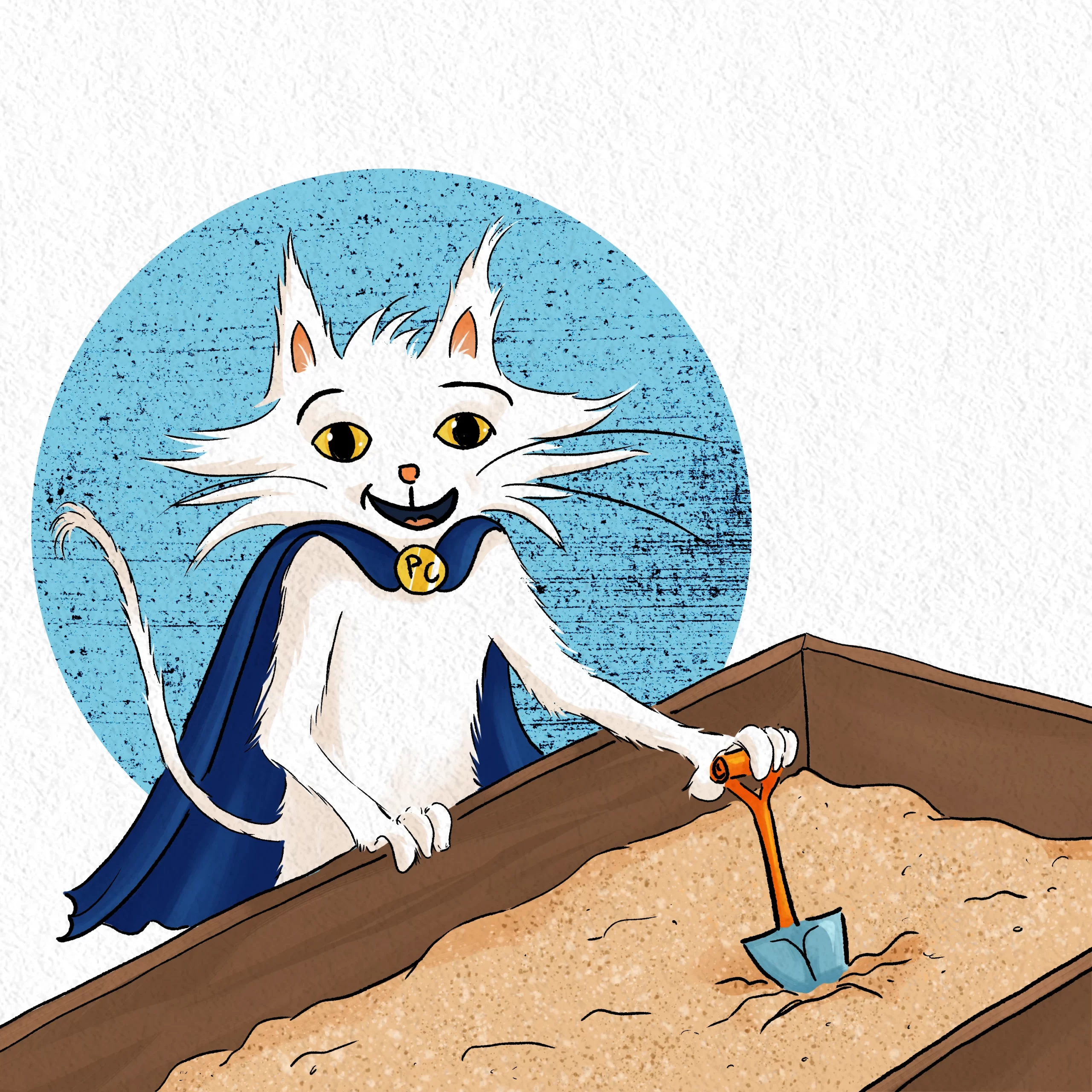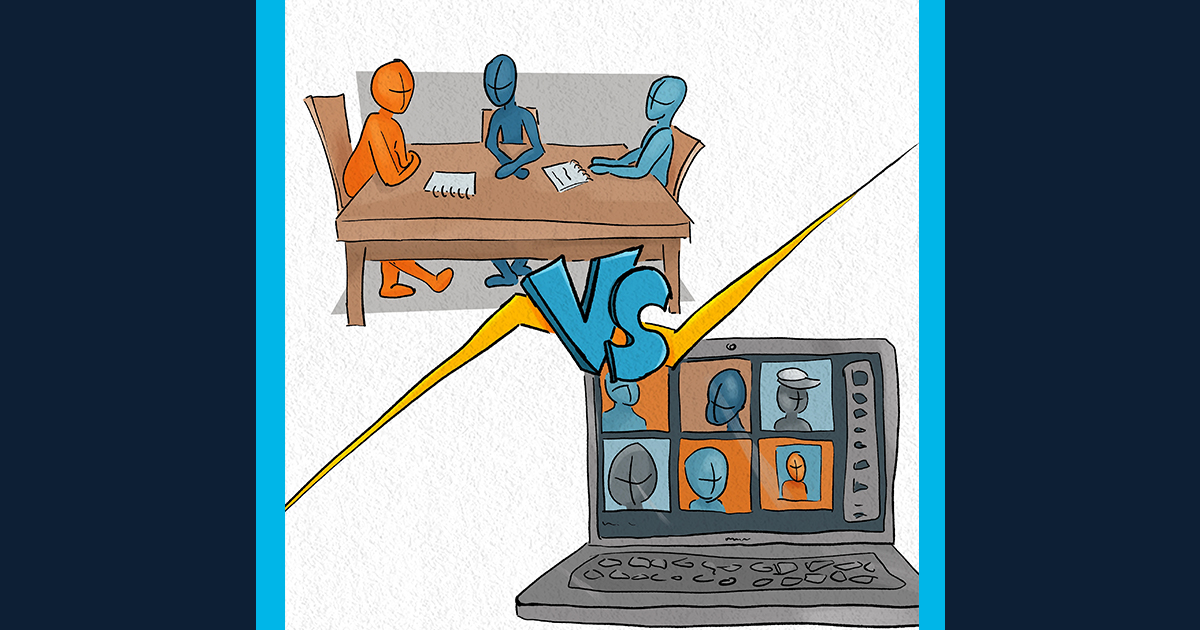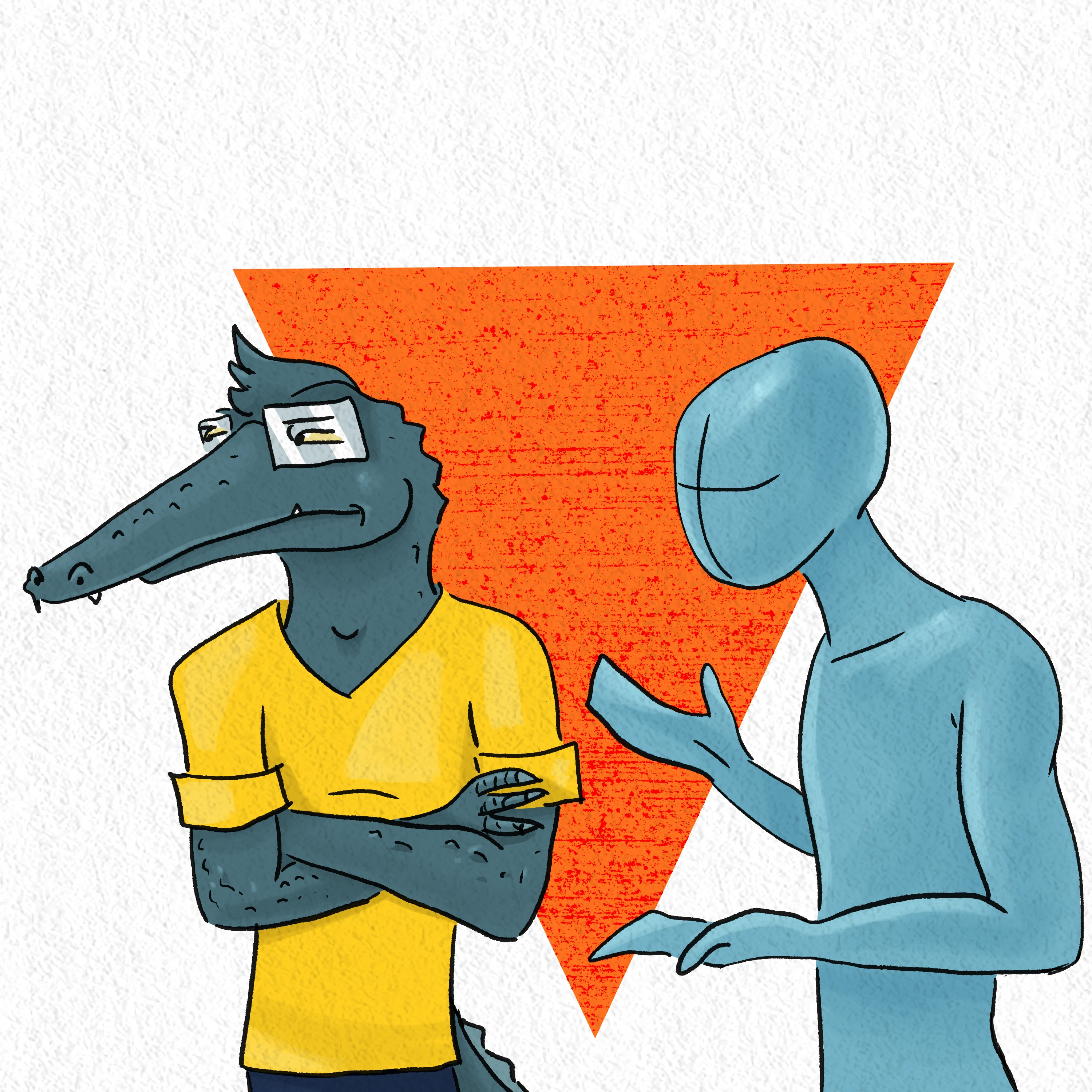
If you’ve been following along, you know that there are some things called First Principles.
These are laws of nature, just like the familiar law of gravity, but they govern the way that heat and other forms of energy work in our universe.
If you’ve been following along you also know that Gary has been running into some trouble with the laws of thermodynamics as he tries to figure out how to make his new invention work.
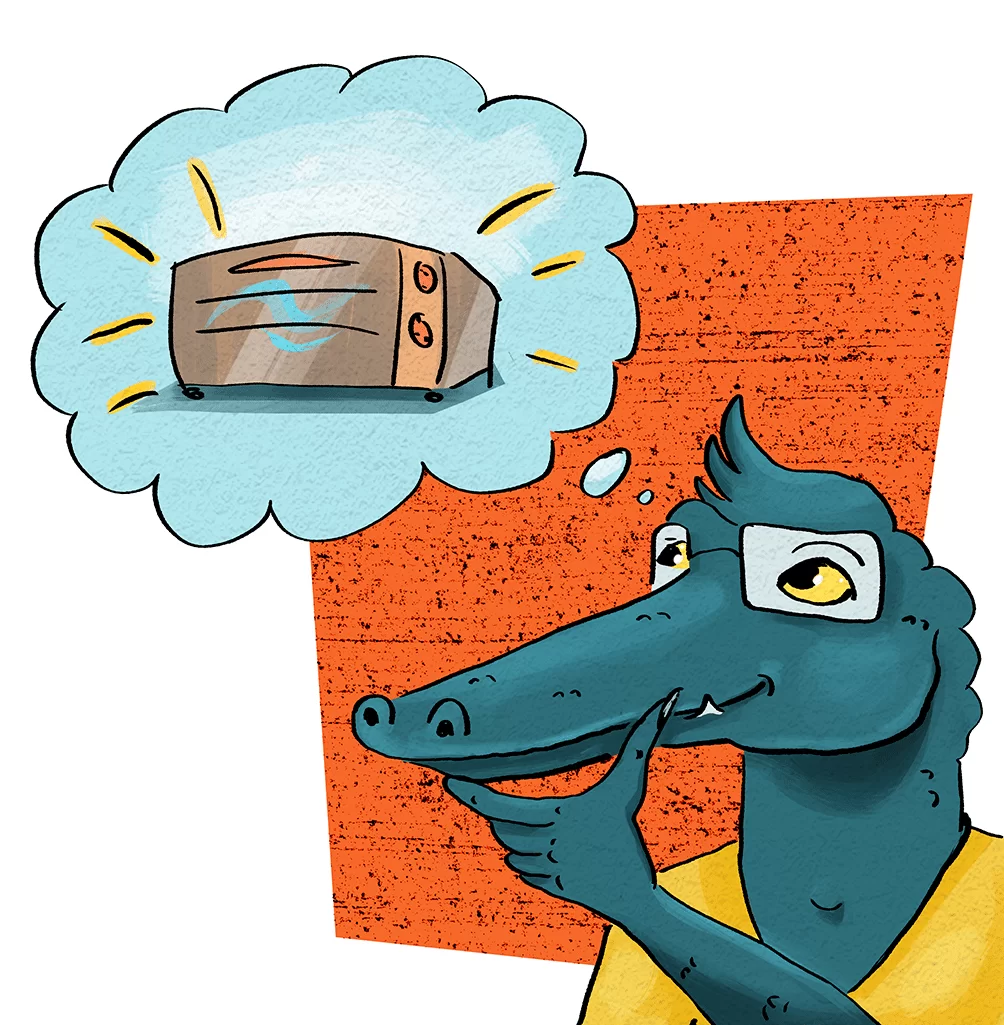
Gary knows that heat is a form of energy. And he knows that he can’t create his own energy to power the oven because of the First Law; nor can he find a way to get heat to simply flow into his oven passively because of the Second Law.
At this point, Gary is sick of spending time brainstorming only to have Process Cat tell him that his ideas won’t work. So he decides to go visit Process Cat:
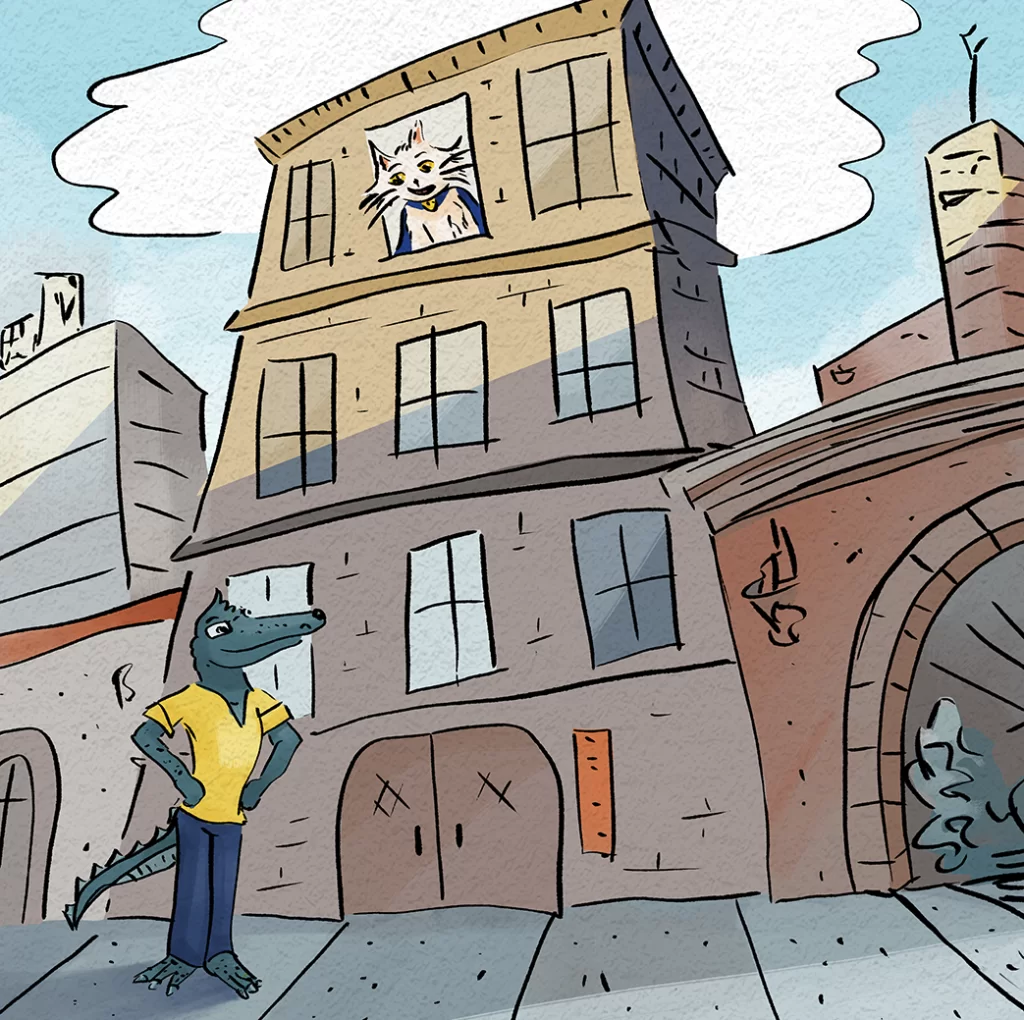
Inside, Gary asks Process Cat, “I know you already know the answer so please just tell me: is there any way I can make an oven that doesn’t require gas or electricity???”
Yes of course there is and you’re already familiar with some of them.
Woodstoves and wood-fired pizza ovens, to name two. People also cook with charcoal, with gasses other than the one found in a gas oven (think of a propane grill) and in some countries, with dried cow dung cakes! And don’t forget that it’s also possible to use an electric oven powered with a renewable energy source such as wind, solar, or hydropower.

Gary is disappointed by this news. His invention isn’t going to work! Luckily for Process Cat, when Gary’s feeling bad he likes to destress by baking.
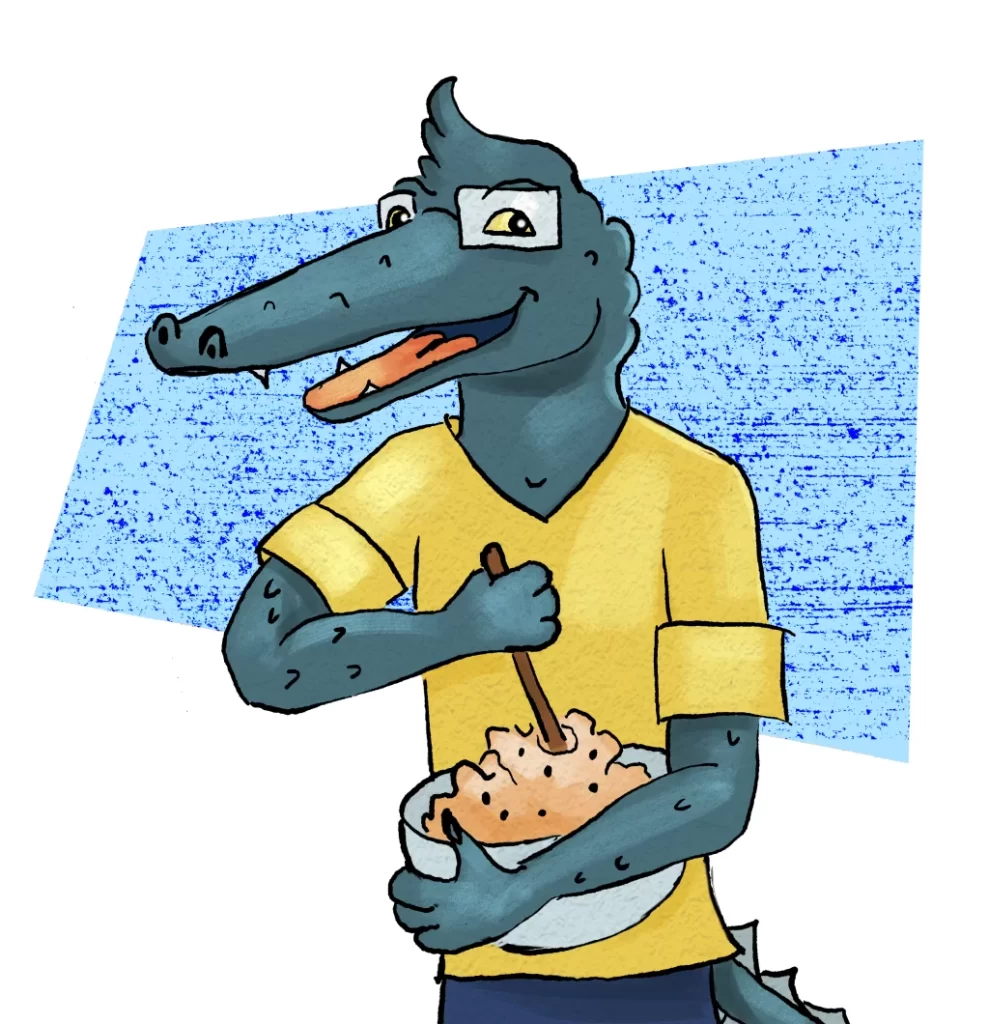
While the cookies are in the oven, Gary thinks of another question for Process Cat: “Ok, so are the two laws you told me about the only First Principles?”
The last two First Principles.
As a matter of fact no, there are two others!
The Zeroth Law of Thermodynamics: If two systems are each in thermal equilibrium with a third system, then they are in equilibrium with each other.
In plain English, this basically just means that temperature, as used in science and engineering, is an absolute scale. Process Cat, being a native New Yorker, might find a temperature of 10℃ (50℉) to be “pleasantly crisp” and someone from an equatorial climate might find it to be “very cold.” Those are opinions. But 10℃ is not a matter of opinion. Everyone, no matter where they’re from, can look at a thermometer and agree that the temperature is 10℃.
This probably seems obvious if you’ve grown up using scales like Celsius or Farenheight to talk about temperature. But remember, those scales didn’t always exist! They were invented by people. That’s why this needed to be stated explicitly.
The Third Law of Thermodynamics: At a Temperature of Absolute Zero, solids must exist in a perfect crystal structure with no disorder and no motion.
This one’s a little more esoteric. The very short summary is that there is an actual minimum possible temperature, called absolute zero. It’s −273.15°C, −459.67°, or 0 Kelvin. Kelvin is a temperature scale that uses degrees the same size as the Celsius scale, but shifted such that absolute zero is zero on the Kelvin scale. (There is also a corresponding scale called Rankine which does the same thing using Farenheight degrees. But, I’ve personally never used it outside of a thermo class 😉
And quite frankly? If you’re inventing something where this is going to come into play, you need more advanced resources than Process Cat.

Weekly Challenge:
Keep inventing, keep prototyping, keep making. And congratulate yourself for understanding the basics of Thermodynamics!

